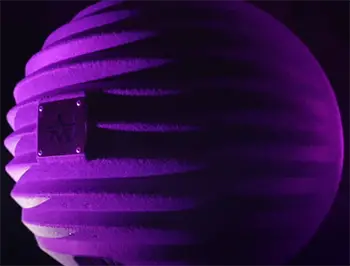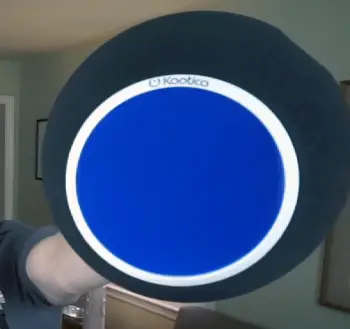Capturing pristine audio quality has never been more critical. Whether you’re a musician, podcaster, or a content creator, you know the value of a high-quality microphone. However, the quest for optimal audio doesn’t end with the mic.
The environment in which you record plays an equally vital role.
This is where microphone isolation tools, such as the Aston Halo and the Kaotica Eyeball, come into the picture. This comparative analysis will delve into the unique features, pros, and cons of both to help you make an informed decision.
A Brief Comparison Table
| Features | Aston Halo | Kaotica Eyeball |
| Design | Semi-enclosed, shell-like | Fully enclosed, ball-like |
| Material | Patented PET felt | Acoustic foam |
| Size | Large | Compact |
| Portability | Medium | High |
| Performance | Superior isolation | Good isolation in compact form |
| Versatility | Limited to certain microphone types | Works with a variety of microphones |
| Aesthetics | Professional and appealing | Functional, less aesthetic |
| Environmental Impact | Made from 70% recycled PET plastic | N/A |
| Cost | Higher | Lower |
The Aston Halo: Reflecting Perfection

The Aston Halo is an innovative mic isolation product that is designed to improve room acoustics.
It’s constructed using patented PET felt, which is one of the most lightweight and efficient, technically advanced materials available.
This acoustic treatment tool minimizes sound reflection while maximizing sound absorption, thus ensuring a high-quality recording environment.
- Aston Halo: The Pros
The design of the Aston Halo is one of its strong points. It wraps around the top, bottom, and sides of the microphone, offering an almost 360-degree isolation.
It is notably larger than most competitors, providing a greater surface area for absorption and diffusion.
Not only does it function well, but it also looks professional and appealing. It’s lightweight, easy to install, and highly portable. The Halo is also eco-friendly, made from 70% recycled PET plastic.
- Aston Halo: The Cons
On the downside, the Aston Halo’s large size might not be suitable for cramped spaces. Furthermore, its price tag is considerably higher compared to other microphone isolation tools.
The Kaotica Eyeball: A Compact Powerhouse
The Kaotica Eyeball takes a different approach to mic isolation. This foam ball fits around your microphone, reducing ambient noise by creating a mini vocal booth.
It’s a portable and effective tool, especially in less-than-ideal recording conditions.
- Kaotica Eyeball: The Pros
The Eyeball’s design is its unique selling proposition. It’s small, lightweight, and can easily fit into a backpack, making it perfect for traveling musicians or podcasters.
Another advantage is that it can accommodate different microphone types, including both dynamic and condenser mics. Its construction material is highly effective at reducing ambient noise.
- Kaotica Eyeball: The Cons
The Eyeball doesn’t provide as much isolation as some larger shields like the Halo. It’s also not as aesthetically pleasing, which may be a consideration if you’re recording videos.
Lastly, the Eyeball is designed for a single microphone, and the fit might not be perfect for all mics.
Key Differences Between Aston Halo and Kaotica Eyeball
Let’s move beyond the surface-level details and dig deeper into the contrasts between the Aston Halo and Kaotica Eyeball. While they share a common goal – microphone isolation – their approach, design, and performance significantly differ.
- Design and Construction

The Aston Halo takes a semi-enclosed, shell-like design approach.
This design provides nearly 360-degree isolation, offering an extensive area for sound absorption and diffusion.
It’s constructed using patented PET felt material, which is known for its lightweight and effective sound absorption qualities.
The Kaotica Eyeball, in contrast, adopts a full-enclosed, ball-like design.
This foam ball encapsulates the microphone, creating a mini, portable vocal booth. It is smaller and lighter than the Halo, making it an excellent choice for mobile creators.
- Size and Portability
One of the noticeable differences between these two devices is their size. The Halo is larger, providing a larger surface area for sound absorption, leading to superior isolation.
However, its large size might not be suitable for confined spaces or for creators on the move.
On the other hand, the Kaotica Eyeball’s compact design shines through when portability is key. This small and lightweight device can easily fit into a backpack, making it perfect for musicians or podcasters on the move.
- Performance and Versatility
The Aston Halo’s larger size and patented material allow it to provide better isolation. It effectively controls both direct and diffused sound, creating a more controlled recording environment.
However, the Kaotica Eyeball, despite its smaller size, offers excellent isolation performance in less-than-ideal recording conditions. The Eyeball is also more versatile than the Halo, as it can accommodate different types of microphones, including both dynamic and condenser mics.
- Aesthetics and Environment Impact
Aesthetics might not affect the audio quality, but they can be an essential consideration, especially for video content creators. The Halo, with its unique and professional design, stands out in this aspect. Plus, it’s eco-friendly, made from 70% recycled PET plastic.
The Eyeball, while not as aesthetically pleasing, is extremely functional. It doesn’t have the professional appeal of the Halo but makes up for it with its functionality and portability.
- Cost
Cost is another significant difference between these two devices. The Aston Halo comes with a higher price tag, reflecting its larger size, superior material, and design.
Conversely, the Kaotica Eyeball is more affordable, a plus for creators on a budget.
Frequently Asked Questions (FAQ)
Typically, the 5200 fast cure takes approximately 24 hours to dry. However, it may take up to 48 hours or more for it to fully cure, depending on the temperature and humidity conditions.
Accelerating the curing process isn’t recommended as it might impact the strength and integrity of the 5200. However, ensuring optimal conditions, such as a room temperature of around 70°F to 80°F and adequate ventilation, can help the curing process.
The ideal temperature range for 5200 to cure is between 40°F to 90°F. However, it cures faster in temperatures ranging from 70°F to 80°F.
Yes, 5200 Fast Cure can be used underwater. Its robust adhesive properties allow it to form watertight bonds, even under water. However, it is always recommended to apply it in dry conditions whenever possible.
Final Verdict
While the Aston Halo provides extensive isolation due to its larger design, the Kaotica Eyeball’s portability and adaptability cannot be overlooked. The decision between the two will largely depend on your specific needs and circumstances.
